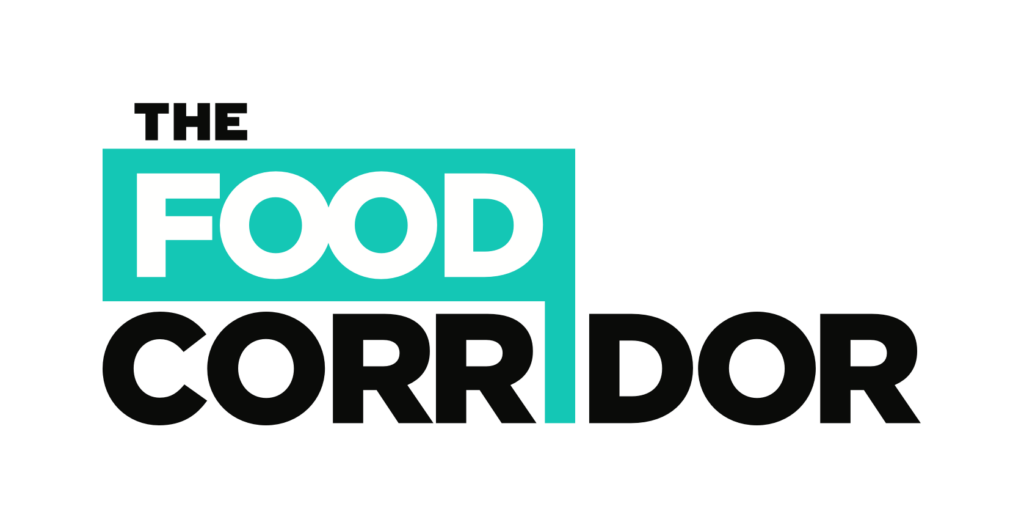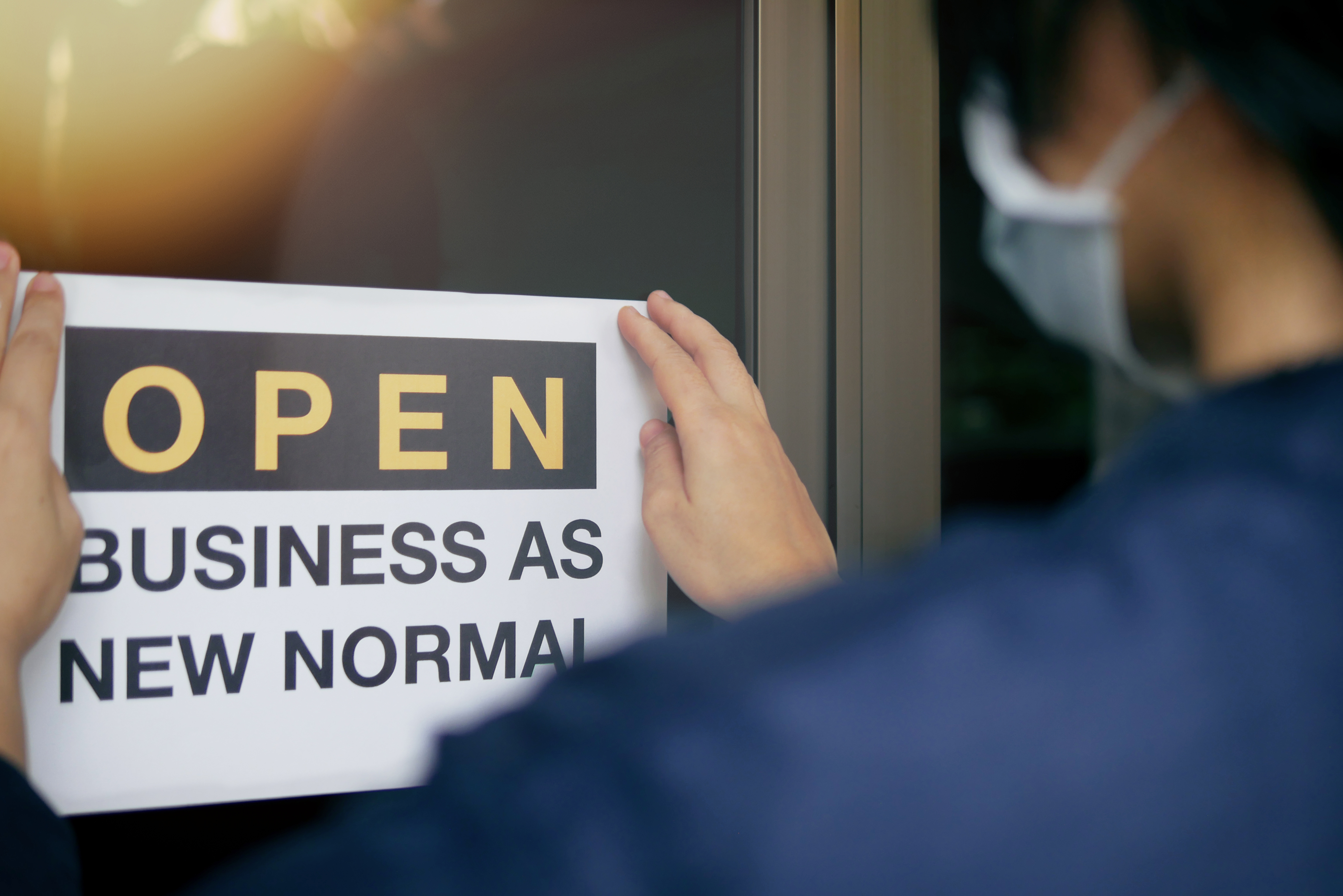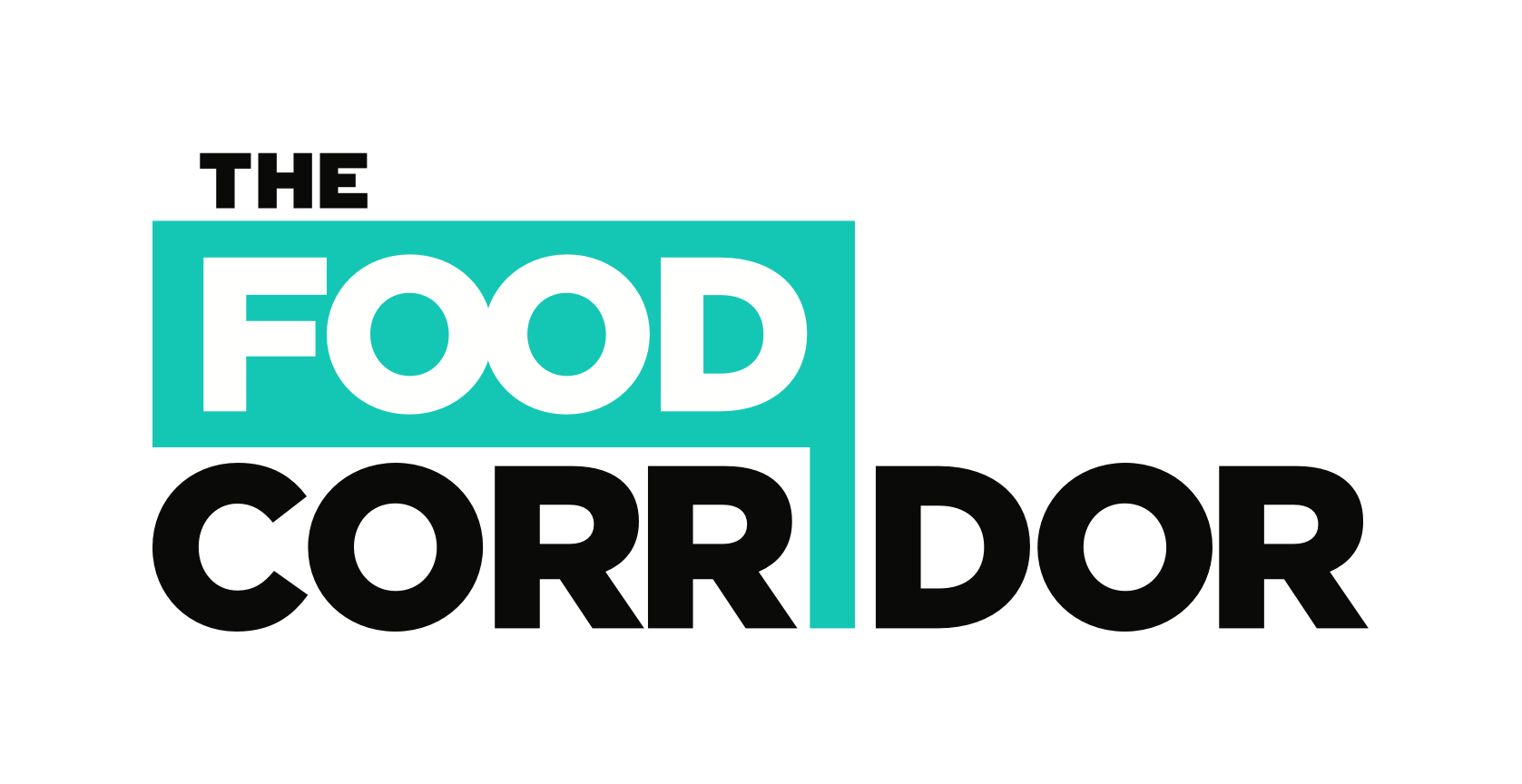You’re probably tired of hearing the phrase the new normal. And might be wondering what it actually means for you and your business – how will your clients safely produce food? When will large events open back up? Will you have to redesign your serving process for safe distancing? How will you keep your staff healthy and feeling safe? We thought it was worth trying to answer these questions, using the best available data and predictions.
It’s not easy to make these predictions, especially without a working crystal ball, but we can point to similar disruptions like the decimation of the airline industry post-9/11 and the economic downturn after the 2008 financial crisis to get an idea of what, systematically, a post-Covid-19 world might look like and what the impact might be for shared commercial kitchens. This should help you and the industry make longer-term plans to secure your future.
If you’re looking at the shorter term, for now, read our posts on how to transition your business to delivery or ecommerce and how other businesses have pivoted.
What Will the Post-Covid World Look Like for Food Businesses?
First of all, it might not be a post-Covid world, but more of a managed Covid world. Either way, social distancing, an increased focus on personal hygiene, face mask wearing, and contact tracing at all kinds of restaurants and in kitchens may be the new normal. Let’s get into some of the details.
Dining Out
We can get a clearer picture by looking at a city like Hong Kong, one of the most densely populated in the world which, despite bordering China, has managed to minimize the spread of the virus without a full lockdown. The government did implement rules requiring restaurants to run at half capacity with tables of no more than four diners (recently increased to eight).

Many restaurants go further than this, checking each guest’s temperature and requiring every diner to sign a declaration in order to track the spread should a confirmed case be recorded. If a guest arrives with a temperature of over 99.5F (37.5C), they are not allowed in. Some restaurants also offer paper bags for customers to place their masks in while they eat. With all of these measures in place and all the staff wearing masks, the atmosphere is affected, but the most important thing is that customers and staff feel safe.
One Hong Kong restaurant group released this Covid-19 playbook, which has been picked up by Business Insider and shared widely as a model for safe reopening. It also gives advice on managing cash, communicating with customers and the public should things go wrong, and practical tips on implementing hygiene and distancing measures to stop the spread of the virus, all very much applicable to shared kitchen owners and all kinds of food businesses.
In the US, strict hygiene and distancing measures will become normal, routine, and in some instances, requirements. We are likely to see sanitizer at the door, disposable paper menus, people wearing masks, and large gatherings of people in confined places will be limited to the extent possible. There will be more space, and less density, which has obviously negative impacts on economies of scale, and therefore, food prices.
This gives us an idea of what dining out may look like in the future. But what about catering and eating on the go?
Food Trucks and Caterers
With festivals and events of all kinds cancelled for the foreseeable future, food truck operators have had to adjust. But they also may be well placed to pick up the slack from other areas of the restaurant business given their flexible mobile nature. Food trucks can be many things in an uncertain world, from mobile meal prep kitchens, to food delivery vehicles, to portable mini restaurants. With the proper social distancing and hygiene measures in place, there’s certainly an opportunity for food trucks.

With a lack of physical assets to pivot around, and a summer of weddings, festivals, and large gatherings wiped out, things are looking bleak for caterers. If you can manage your cash flow (or help your caterer tenants to do so) and survive, the future does offer hope. Weddings and large events will still happen and with up to a year’s worth of events being hastily rescheduled, there is going to be a huge amount of demand once things get back up and running. Buffets are out, but even if people are having to distance during events, they will still need to eat. Events are likely to follow similar guidelines as restaurants, with more distance between tables, staff wearing masks, and sanitizer on each table. Many caterers across the country are being plugged in to quantity food production for emergency, institutional, and first responder meals. People still need to eat so this is where being creative pays off.
An Accelerated Shift to Digital
We were already rapidly moving away from the traditional models of business and food consumption into the digital realm and Covid has accelerated this shift. As Microsoft CEO Satya Nadella puts it, “As Covid-19 impacts every aspect of our work and life, we have seen two years worth of digital transformation in two months.”
Many digital platforms have seized the opportunity to onboard as many new users as possible by offering their services for free or at a discount during the pandemic. Others have switched their offerings to take advantage of the demand.
One of the positives of a Covid-induced shift to digital is that more and better platforms will emerge to help business owners improve efficiency, save money, and offer their customers more convenience. Delivery platforms and aggregators have seen huge spikes in demand and have hastily onboarded as many new restaurants as possible. Many restaurant reservation and marketing platforms have pivoted to offer online ordering and help restaurants set themselves up to offer their own delivery services.

Some argue restaurants are being pushed to tech platforms even when the cut they take on orders may not even make the switch profitable. Meanwhile, after an attempted merger with Doordash failed in January, Uber is now reportedly trying to buy Grubhub. The inevitable conglomeration of these already giant platforms is unlikely to benefit small restaurants and food businesses. And sadly, the business models for the food delivery aggregators is still not proven and is currently being propped up with venture money. Which begs the question, what will the future really look like if delivery is not viable?
How does this impact the food industry and specifically shared kitchens?
With restaurants forced into offering delivery and curbside pickup, delivery platforms are creating more demand for centralized kitchen facilities. We are likely to see more digital restaurant brands offering delivery-only, and a resurgence in boxed meals and meal kits, which many predicted was a dying market. This points to an increase in businesses looking for space in shared kitchens, especially when many may be looking for a lease with less commitment in uncertain times.
Better tech for shared kitchens will help to bring in more tenants and help to keep businesses afloat during this challenging time. Solutions like The Food Corridor’s shared kitchen management software make scheduling, staying on top of your finances, and managing tenants more efficient and cheaper overall, which might just be the difference between boom or bust in today’s climate. The software can also be used by existing restaurants wanting to share their excess capacity with other operators. If you are interested in posting your space, you can do so for free at The Kitchen Door.
Ecommerce in the Food Industry is More Important than Ever
A recent survey by Brick Meets Click and ShopperKit says that the number of households using online grocery services has doubled compared to last year, to 40 million per month. Looking forward, almost half the respondents said they were either very likely or extremely likely to continue shopping online in the future.
With grocery giants Amazon and Walmart struggling to keep up with the surge in orders, online farmer’s markets have been trying to take a slice of the market. With the peak harvest fast approaching and most of the country still locked down, growers and producers need a marketplace and will flock even more quickly to online platforms to shift their produce.

Photo by John Lambeth from Pexels
Digital sales platforms for food products are booming and virtual farmers’ markets have seen a huge increase in visitors as their physical counterparts are closed. Platforms like Farmspread, Local Food Marketplace, and Good Eggs that had been struggling to make an impact as consumers buying locally favored in-person interactions with farmers and procedures. But now they are getting the support they need from local communities because of the lockdown restrictions. Online marketplaces have popped up out of necessity with Source What’s Good and Harvest to Market helping folks get online quickly.
With distancing measures in place for the foreseeable future and awareness of these platforms greater, this looks set to continue. Offering local produce and accessing a wider market online is another way it’s easier for shared kitchens to generate some much-needed revenue.
A Trend for Supporting Local Businesses and Communities
Having been shown in a dramatic and sudden manner how little dominion they really have, people will want to wrestle back control of their lives wherever they can. And with travel restrictions in place and a renewed sense for many of what’s most important to them, there will be more focus on local communities and family life.
We’ve also seen an emerging sense of duty to support local restaurants and food businesses. Back in March, a campaign encouraging people to buy vouchers or order takeout from neighborhood restaurants trended with the #TheGreatAmericanTakeout campaign.
Community kitchens are well placed to become hubs for local communities and help local enterprises. Especially given their infrastructure for food distribution: loading docks, cold and dry storage, and accessibility to highways. Shared kitchens should be an integral part of the domestic supply chain.
In the spirit of helping those most at need and supporting the food production supply chain in the US, the USDA launched the Farmers to Families program, which awarded $1.2 billion in contracts to distribute food boxes to families in need. Although questions were raised over how the companies supplying the produce for the boxes were chosen and whether they could appeal the decisions, the program highlights the move towards supporting those in need in a crisis. As the pandemic and the lockdown continues to put the neediest at risk, we should expect this trend to continue.
Are We Headed for an Economic Recession or Even Depression?
The big question, with most of the world locked down for several months, is what are the consequences for the economy?
With 30 million applying for jobless aid in the last six weeks, the longer-term effects are not looking good. The effect is more sudden compared with the 2008 crisis, where more claims were filed but over a longer period. JP Morgan Chase expects unemployment to reach 20% in the second quarter of 2020. But with the lockdown slowly lifting, experts hope that it won’t have a long-lasting effect.
The truth is that the novel nature of the situation means we don’t know what the long term impact will be. A lot depends on if the infection rate climbs back up as lockdown is eased. Ultimately, we need a vaccine before things can get back up and running fully. The important thing is to be agile and ready to adapt. Many successful ventures have emerged out of extenuating times, perhaps better able to manage external shocks the future will inevitably bring.
The Silver Lining
The good news for the food industry is that starting a food business has a lower barrier to entry than other industries. Starting a direct to consumer brand or a business producing prepared meals, especially if you already have suppliers and kitchen space, is relatively low cost. It is possible to create a recession-proof business by being agile and focussing on getting food to your customers no matter what.

With unemployment at such alarming levels, there will be a larger pool of workers looking for gig or casual work. For shared kitchens this means more and better talent is available to keep you going through uncertain times.
As we have seen during this unsettling time, the food industry is part of the backbone of this economy. Any country-wide revival will involve suppliers, producers, restaurants, caterers, and everyone else who keeps the industry going. It’s up to the community of professionals to make it happen in the best possible way.
We’ve had a lot of stories of overcoming adversity coming through our online community of shared kitchen owners and tenants, The NICK, like this one from Matt Wiggins who runs a creative arts warehouse in the center of San Francisco that operates a shared commissary:
“Over the past decade we’ve seen the boom and busts of food delivery start-ups (RIP: Kitchit, Sprig, Munchery, Feastly), and one bright spot I see in COVID is that the individual executive chefs or sous chefs from closed restaurants have been able to adapt into the delivery model relatively quickly. It’s not for everyone, but for those who are wanting to adapt to survive it’s been inspiring to witness.“
“In the first two weeks of the pandemic, I lost 50% of my tenants who were focused on catering events or corporate offices, but through word of mouth in the chef community we’re seeing people who got their PPP loans use it for new rent expenses to try new frameworks in this new reality.”
How Do You Prepare for the New Normal?
Firstly, on a practical level make sure you are doing everything possible to minimize risks and make your health and safety efforts visible to customers:
- Check temperatures and keep a tight record of visitors
- Put up posters promoting extra stringent hygiene practices
- Offer sanitizer at the door and throughout the space
- Require facemasks and consider producing branded facemasks
- Think up other creative ways to promote good hygiene
- Communicate your commitment to promoting a safe return to normal work via your online content, emails, and social media updates
If it makes sense for your business, get on board with online ordering, delivery services, or ecommerce, and help your tenants get set up. Using digital platforms to get your business online is more important than ever. Looking for tools to help with more efficient and better shared kitchen management? Head to The Food Corridor.
Build a community around your business. Being an active part of the local community is not only the right thing to do, but it builds goodwill and a loyal customer base. This is invaluable in an unpredictable landscape with reduced travel and a more community-focused mindset.
One such virtual community of shared kitchen entrepreneurs and commercial food business owners is The NICK – The Network for Incubator and Commissary Kitchens. The lively Facebook group offers support, discussion, and shared insight into the ins and outs of running a shared kitchen.
You might consider a hybrid model to remain as flexible as possible. Could you use your space efficiently as part grocery store, part delivery-only kitchen, part catering business? Then refine and adapt your offering as things develop. The idea here is to be open to adapting to whatever the unpredictable Covid-19 world throws at you.
Above all, think about the problems people are facing and how you are best placed to help them. In tough times, those who are focused on serving others are going to come out with a full order book and a truckload of goodwill. Remember to stay positive and keep a smile on your face – things can only get better!


